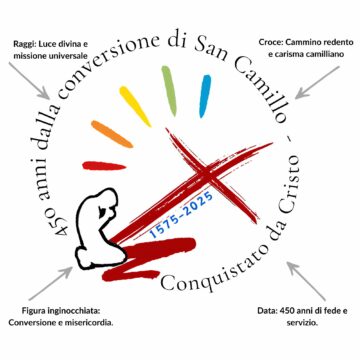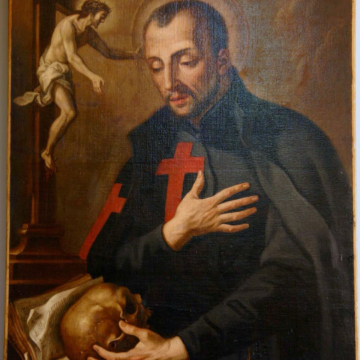 In Giovanni Paolo II ai Religiosi (‘John Paul II to Religious’) Libreria Editrice Vaticana, Vatican City, 1995
In Giovanni Paolo II ai Religiosi (‘John Paul II to Religious’) Libreria Editrice Vaticana, Vatican City, 1995
As regards the essential aspects of consecrated life, the Second Vatican Council, in its decree Perfectae caritatis, after addressing the evangelical counsels of chastity, poverty and obedience, talks about life in common with reference to the example of the first Christian communities and in the light of the Gospel.
The teaching of the Second Vatican Council on this subject is very important, even though it is true that a life in common understood in a strict sense does not exist, or is very much reduced in some forms of consecrated life, such as those that are hermitical, and it is not necessarily required of secular institutes. But it exists in the great majority of institutes of consecrated life and has always been seen, both by their Founders and by the Church, as a fundamental observance for the success of religious life and for a good governance of the apostolate. As a confirmation of this, the Congregation for Institutes of Consecrated Life and Societies of Apostolic Life published on 2 February 1994 a special document on ‘Fraternal Life in Community’.
If we look at the Gospel, one can say that life in common corresponds to the teaching of Jesus about the connection between the two precepts of love for God and love for neighbour. In a way of life in which one wants to love God to the utmost, one can but commit oneself, as well, to loving one’s neighbour with especial intensity, beginning with those who are nearest to one because they belong to the same community as you. This is the way of life of ‘consecrated people’.
In addition, from the Gospel it is certainly clear that the calls of Jesus are addressed to individuals, but in general in order to invite them to come together, to form a group: such was the case with the group of disciples and with the calls to women.
In the pages of the gospels we also find documented the importance of fraternal charity as the soul of a community and thus as an essential value of life in common. There are references in them to the disputes that took place on a number of occasions between the Apostles themselves who, although they followed Jesus, had not ceased to be men, the children of their time and their people: they sought to establish ranks of prominence and command. Jesus’s reply was a lesson about humility and the readiness to serve. He then gave them ‘his’ commandment: the commandment of mutual love following his example. In the history of the Church, and in particular of religious institutes, the problem of relations between individuals and groups has often arisen. It has received no other valid answer than that Christian humility and fraternal love that unites in the name and in virtue of the charity of Christ, as the ancient song of fraternal meals repeats: Congregavit nos in unum Christi amor – the love of Christ has brought us together.
It is certainly the case that fraternal life in common requires notable efforts and sacrifices, and it requires generosity no less than the exercise of the evangelical counsels. Thus entrance into a religious institute or a community implies a serious commitment to living fraternal love in all its aspects.
The community of the first Christians is an example of this. It met immediately after the Ascension to pray in unity of hearts and to persevere in fraternal ‘communion’, even coming to share possessions: ‘they held everything in common’. The unity wished for by Christ found in that moment of the beginning of the Church an implementation that was worthy of being remembered: ‘The multitude of those who had come to faith had one heart and one soul’.
In the Church the memory of – perhaps also nostalgia for – that early community has always remained strong, and in essential terms religious communities have always sought to reproduce that idea of communion in charity which became a practical law of life in common. Their members, brought together by the charity of Christ, live together because they intend to continue in that love. Thus, they can be witnesses to the true face of the Church in which her soul is reflected – charity.
However, this cannot be only a matter of a union of good feeling and human affection. The Second Vatican Council, echoing the Acts of the Apostles, speaks about ‘unity of spirit’. This is a form of unity that has its deepest roots in the Holy Spirit who effuses charity into hearts and leads different people to help each other on the pathway of perfection, establishing and maintaining amongst them an atmosphere of good understanding and cooperation. Just as the Holy Spirit assures unity throughout the Church, so does he establish it and make it last in an even more intense way in a community of consecrated life.
 What are the ways of charity infused by the Holy Spirit? The Second Vatican Council calls attention in particular to mutual esteem. It applies to religious two recommendations of St. Paul to Christians: ‘love one another with brotherly affection; outdo one another in showing honour’ and ‘bear each other’s burdens’.
What are the ways of charity infused by the Holy Spirit? The Second Vatican Council calls attention in particular to mutual esteem. It applies to religious two recommendations of St. Paul to Christians: ‘love one another with brotherly affection; outdo one another in showing honour’ and ‘bear each other’s burdens’.
Mutual esteem is an expression of mutual love that is opposed to the tendency – which is so widespread – to judge one’s neighbour severely and to criticise him. The recommendation of St. Paul stimulates us to discover in others their qualities and, inasmuch as poor human eyes can see, the wonderful work of grace and – in definitive terms – of the Holy Spirit. This esteem involves acceptance of the other with his characteristics and his way of thinking and acting; thus it is possible to overcome many obstacles to harmony between characters that are often very different.
‘Bearing each other’s burdens’ means taking on with good will the defects, whether real or apparent, of others, even when this causes irritation, and willingly accepting all the sacrifices that are imposed by living together with those who do not have a mentality or a temperament that is fully in line with one’s own way of seeing things and judging.
The Second Vatican Council, again in relation to this subject, observes that charity is the completion of the law, the bond of perfection, the sign of the passage from death to life, the manifestation of the advent of Christ, the source of energy for the apostolate. We can apply to life in common the excellence of charity described by St. Paul in the First Letter to the Corinthians, and attribute to it what the Apostle calls the fruits of the Spirit: ‘Love, joy, peace, patience, benevolence, goodness, meekness, self-control’: fruits – says the Second Vatican Council – of the ‘love of God diffused in hearts’.
Jesus said: ‘whenever two or three are gathered together in my name, I am amongst them’. There we have it: the presence of Christ is acquired wherever there is unity in charity, and the presence of Christ is a source of profound joy, which is renewed every day, until the moment of the final encounter with him.












Camillians on Facebook
Camillians on Twitter
Camillians on Instagram